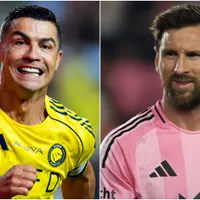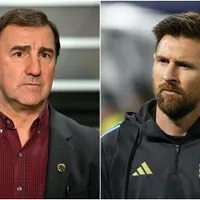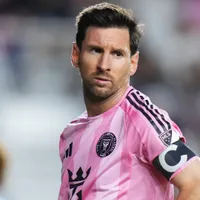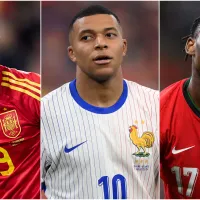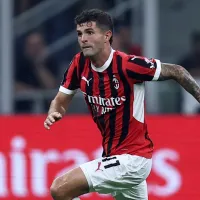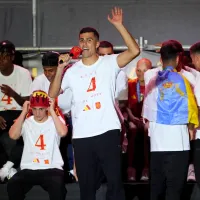Since the 1960s, Italian defenders have been known for their selfless demeanor, often sacrificing their bodies for the team. Their fearless attitude involves trailing, shadowing, and committing fierce tackles against opponents in dangerous situations. Italy has consistently produced a plethora of world-class fullbacks, renowned for their refusal to concede a goal. However, the true essence of Italian defense lies in its incorporation into the attack.
One defender, the late Giacinto Facchetti, stands out for his strategic brilliance. His No. 3 jersey symbolizes his strategy, which demands pertinacity from current coach Luciano Spalletti. In Euro 2024, Facchetti’s legacy induces a relentless approach to the game.
Tribute to Giacinto Faccheti: No. 3 shirt retired forever
The No. 3 shirt at Inter Milan will forever be retired in honor of Facchetti, the legendary fullback who passed away in 2006 at 64. He dedicated his professional career to Inter from 1960 to 1978 and became technical director and president. Facchetti was a game-changer, revolutionizing the role of a fullback by being an attacking force on the field despite primarily using his right foot while playing on the left. He also captained Italy’s national team 70 times during his 94 international appearances, leading them to victory in UEFA Euro 1968.
In a memorable semifinal match against the Soviet Union, which ended in a draw after extra-time (before penalty shootouts became mandated), Facchetti correctly called heads on a coin toss to determine the winner. He lifted the championship trophy after their 2-0 victory against Yugoslavia.
Along with his successes with Inter, including winning the Euro Cup in 1964 and 1965, Facchetti had an impressive goal record for a defender with 59 goals in 476 games. It is worth repeating that he played on the left side of the field even though he was naturally right-footed. This strategy often benefits players by taking advantage of the empty area on their dominant side to make powerful shots and passes, utilizing the entire field width.
Catenaccio: Italy’s infamous defense
Giacinto Facchetti was the central figure of ‘catenaccio’. At Euro 1968, the ‘door-bolt’ defense made Italy infamously known as a practitioner of dark art. The defensive tactic inspired the term ‘parking-the-bus’ within soccer terminology. In other words, whenever Italy wanted to prevent a team from scoring, they would suffocate their own third with blue shirts, inducing a claustrophobic atmosphere for the opposition. Minus the lone striker who stood at midfield, ten players would infest the goalmouth. As a result, opposing teams could not score against the Azzurri. Specifically, three defenders were assigned man-marking duties by shadowing opponents for an entire match. Ultimately, this system spawned ruthless tackling deemed legal by referees.
Nevertheless, the ‘sistema evoluto’ of catenaccio would not have been possible without Helenio Herrera – the Argentine coach of Inter Milan. Many teams emulated coach Herrera’s version of Italian catenaccio during that time. Specifically, a sweeper cleaned up loose balls behind a back three that executed ‘long balls’ for a lone striker. However, the emulators should have comprehended the incorporation of counterattack; Herrera had the advantage of utilizing the quick-touch breakaway of Giacinto Facchetti.
“Most people who copied me copied me wrongly.” Helenio Herrera said. “I had Giacinto Facchetti, the first fullback to score as many goals as a forward.”
Origins of Catenaccio: Impact of Italian managers
A decade prior, Helenio Herrera succeeded by winning two league championships with Atletico Madrid and utilizing a primitive version of catenaccio dubbed ‘iron curtain.’ However, catenaccio did not evolve with Herrera alone. A trio of Italian managers in the 1940s are responsible for its success: Mario Villini’s Triestina in 1941, Ottavio Barbieri’s Spezia in 1944, and Giuseppe Viani’s Salernitana in 1948. In their strategies, the center midfielder retreats and performs as a defender throughout the match. However, the teams employing these tactics are disadvantaged physically and technically. Hence, there is a need to ‘park the bus.’
Ultimately, Barbieri invented the ‘sweeper’ position, a key innovation in the evolution of catenaccio. Nevertheless, for AC Milan coach Nereo Rocco, that meant a 1-4-4-1 formation, utilizing a lone sweeper behind the backline and a lone striker up front who waited for the long ball. Coach Rocco won two Scudetto championships using catenaccio in 1961 and 1967.
Soccer sorcery
To the spectators, this strategy drew parallels to ‘Strega’ or witchcraft. Fanatics and pundits alike traduced the Italians for engaging in unsportsmanlike conduct. To the fanatics, it was tasteless soccer. However, to the player and coach, it was genius. “The end justifies the means,” Niccolò Machiavelli riposted. The 15th-century Italian diplomats’ words reverberate in ‘calcio Italiana.’ Any method used to achieve the objective is acceptable. This dichotomy of opinion adds depth to the narrative, allowing the reader to form their own view. Italians are the first to admit that catenaccio has been copacetic in its soccer. Indubitably, coach Luciano Spalletti’s knowledge of catenaccio arcana is legendary. Nevertheless, the Azzurri have generated critical opprobrium from being associated with this system.
After winning Euro 1968, Giacinto Facchetti and his Italian comrades embarked on an epic road to the 1970 World Cup final in Mexico City. Nevertheless, their opponents – the mighty Brazil – exposed the Italian defense with loopholes. In the second half of the final match, Pele’s Seleção struck Italy’s goalmouth three times. Therefore, Brazil’s reputation of ‘Ginga Futebol’ became an entertaining masterpiece. A style of soccer that gave them back-to-back World Cup championships in 1958 and 1962. However, Brazil joined the ranks of Italy; Giuseppe ‘Peppino’ Meazza and his Azzurri won the World Cup twice in 1934 and 1938. After that, Italian Prime Minister Benito Mussolini educated his ally, Adolf Hitler, on the game of ‘Calcio.’ Then, Der Führer utilized ‘fußball’ as mass propaganda in Nazi Germany.
Italian defenders: A legacy of honor
Italy’s legacy of producing world-class defenders is a source of national pride. From the pioneering Giacinto Facchetti to the iconic Franco Baresi and Paolo Maldini, defensive stalwarts have emerged, each leaving an indelible impression on the game. This torch was passed down to the next generation of defenders, including Alessandro Nesta, Fabio Cannavaro, and Gianluca Zambrotta, who have, in turn, paved the way for the likes of Giorgio Chiellini and Leonardo Bonucci. Now, the promising newcomers Giovanni di Lorenzo, Gianluca Mancini, and Federico Dimarco ensure that the legacy of Italian defense continues to thrive.
Although, in Euro 2024, coach Luciano Spalletti intends to employ an attacking style of soccer. The former Napoli boss can take comfort that this new wave of Italian defenders performs in a hybrid capacity. Like Facchetti, Federico DiMarco charges from the flank and scores goals. Further, he plays box-to-box, DiMarco with a bulletproof beard, and Di Lorenzo with a flamethrower stare, not to mention Mancini’s goal-scoring prowess and killer’s glare. The Roma defender has proven to be a threat on set-pieces. Together, the trio are like the office of the triumvirate in ancient Rome.
Defense wins Championships
Defensive heroes are like Marco Materazzi in the 2006 World Cup final against France, who found the net with a breakneck equalizing header. Moreover, Fabio Grosso was responsible for the semifinal winner against Germany, like Leonardo Bonucci in the Euro 2020 final against England, a defender who scored a flash-bang equalizer for the Azzurri.
Ultimately, Italy has proven that it does not matter who scores the goal; if the ball invades the goalmouth, the result will justify the means. Thanks to the pioneering effort of Giacinto Facchetti and Helenio Herrera, the means often come from defenders.
Photos: Imago

